How many times, when presented with a beautifully crafted dish, have you blurted out: “What a feast for the eyes!”? Right before digging in, of course. Meant both as a compliment to the chef and as a way to express your anticipation, this appreciative adage could also be a token of the old human habit of seeing food as a form of art – and of our urge to immortalise those morsels in actual works of art.
As a matter of fact, from the hunting scenes of Paleolithic cave paintings to the social commentary of pop art, food has consistently provided inspirational sustenance to artists for millennia, whether as a figurative means of showcasing the high status of the clients commissioning an artwork, or as allegories designed to challenge the viewer. Join us as we take a look at some of the most interesting and inventive depictions of food throughout art history.
Warning: Empty stomachs not advised.
From depictions of treasured delights in ancient Egyptian tombs, to Roman scenes of lavish banquets and mediaeval painters’ preoccupation with food as religious symbolism, examples of food in early art abound. But it’s with Italian painter Giuseppe Arcimboldo that things really start to get interesting. Truly unique for his time and place, Arcimboldo’s portraits in which fruits and vegetables are used to represent human faces and heads are etched into the memory of even the most casual art fan – specifically Vertumnus and Summer, two of his most famous paintings.
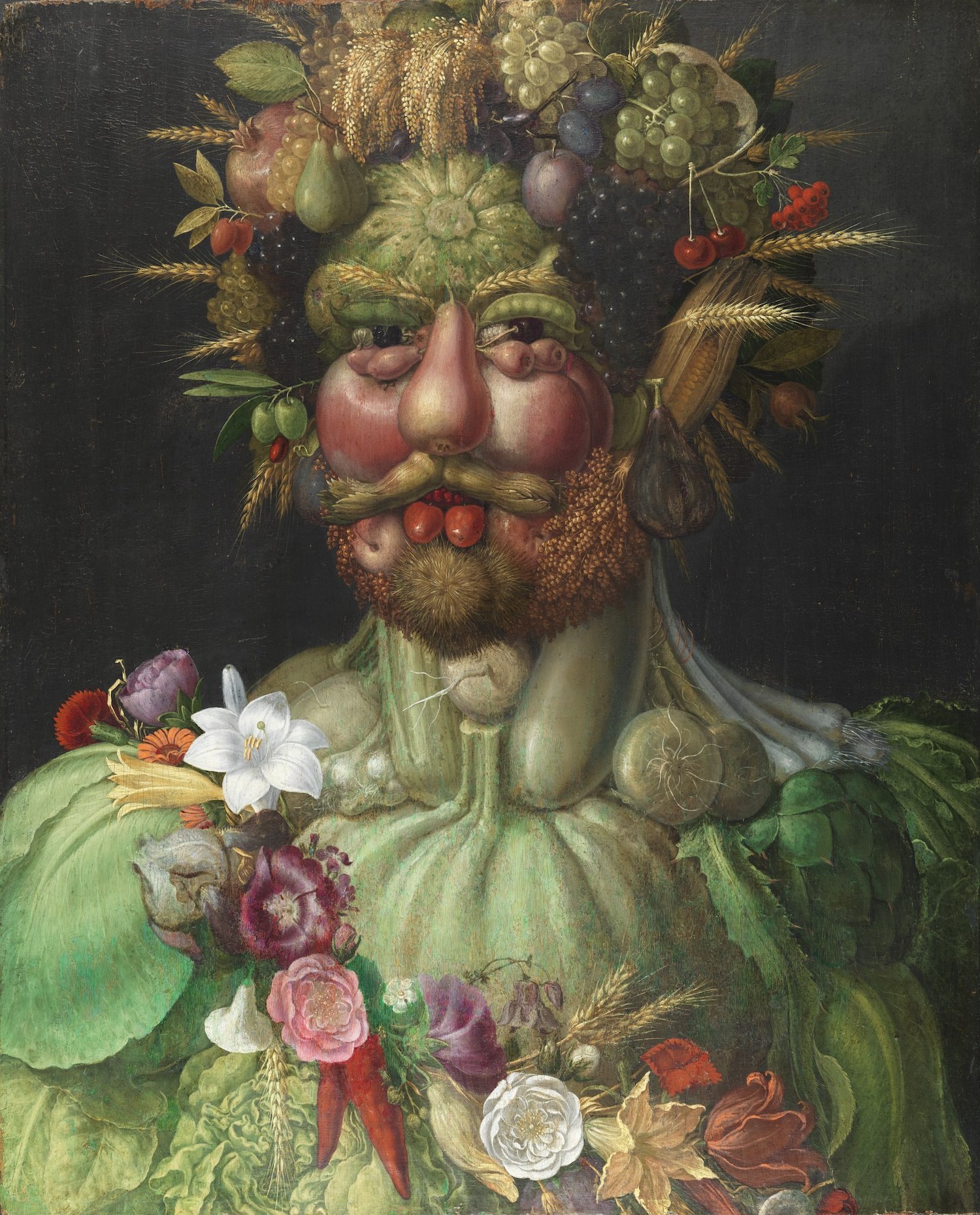
[Image: Erik Lernestål/Wikimedia Commons]
As the court portraitist to a series of Habsburg monarchs, perhaps he is aiming to express the dominion and abundance of the Habsburg dynasty, or maybe such works function as a sort of puzzle, encouraging the viewer to go beyond the superficial first glance and instead consider the whole. Though we may never know his true intent, Arcimboldo’s enigmatic and whimsical paintings continue to fascinate audiences 500 years later.
Arcimboldo’s contemporaries were rendering produce in paintings as well, albeit in more subdued ways. Rejecting the religious symbolism of the past in favour of more philosophical musings and scientific illustrations – especially after the discovery of the New World and its exotic bounty – the 16th century saw the rise of the still life. A prime example is Caravaggio’s Basket of Fruit (circa 1599), where the fruits – worm-eaten, decaying, imperfect – are often thought to emphasise the transience of life.
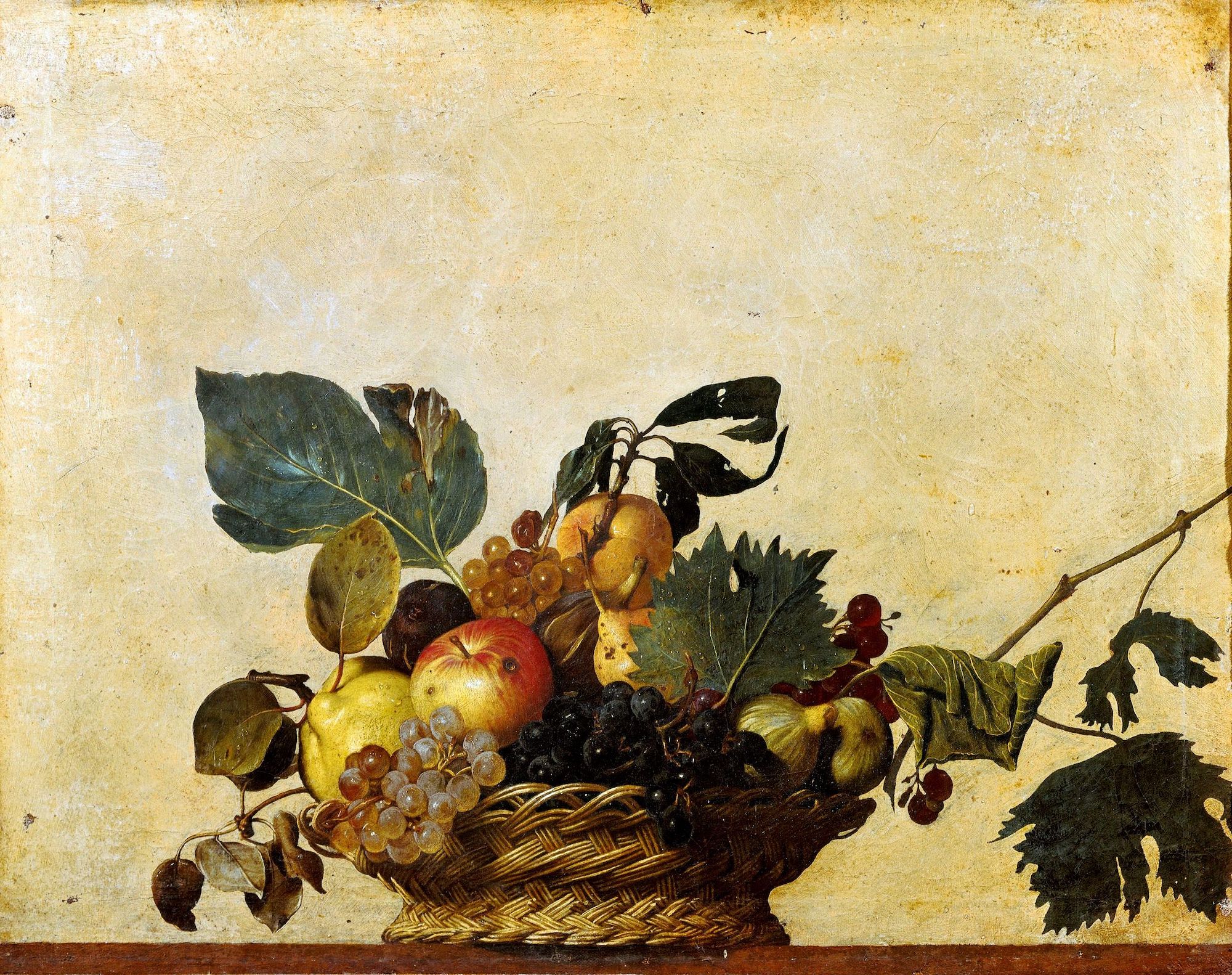
[Image: Lafit86/Wikimedia Commons]
The early 17th century would see still lifes become more ornate and indulgent. Magnificent still lifes known as pronkstilleven came to prominence during the Dutch Golden Age, typically combining European elements with more exotic details – as displayed in the painting below by Jan Davidsz, where a parrot with a striking plumage takes centre stage alongside oysters, melons, citrus fruits and fine tableware.
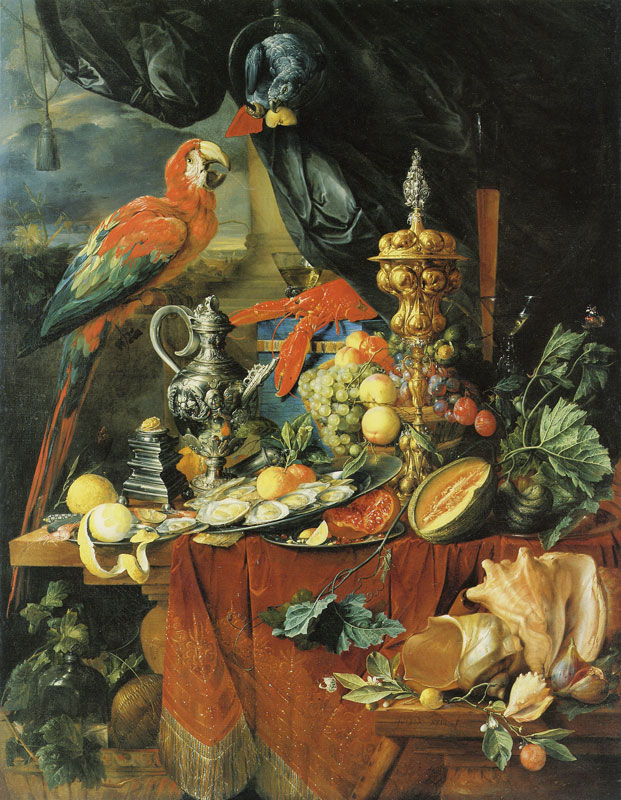
[Image: Jane023/Wikimedia Commons]
Flaunting a certain level of affluence and joie de vivre connected with fine delicacies, perhaps pronkstilleven could be seen as a precursor to the #foodporn of our social-media-obsessed modern world.
With the rise of global trade networks in the 17th and 18th centuries, Europeans began to discover and become more familiar with spices and specialties from overseas such as coffee, chocolate and tea, which caught on so quickly among aristocrats that they soon became staples at high society breakfast. Swiss painter Jean-Etienne Liotard, for one, took inspiration from the craze and created an entire series dedicated to women drinking or serving hot chocolate, such as his The Chocolate Girl (1754), which would serve as inspiration for an iconic marketing design used by Dutch chocolate manufacturer Droste’s in the early 20th century.
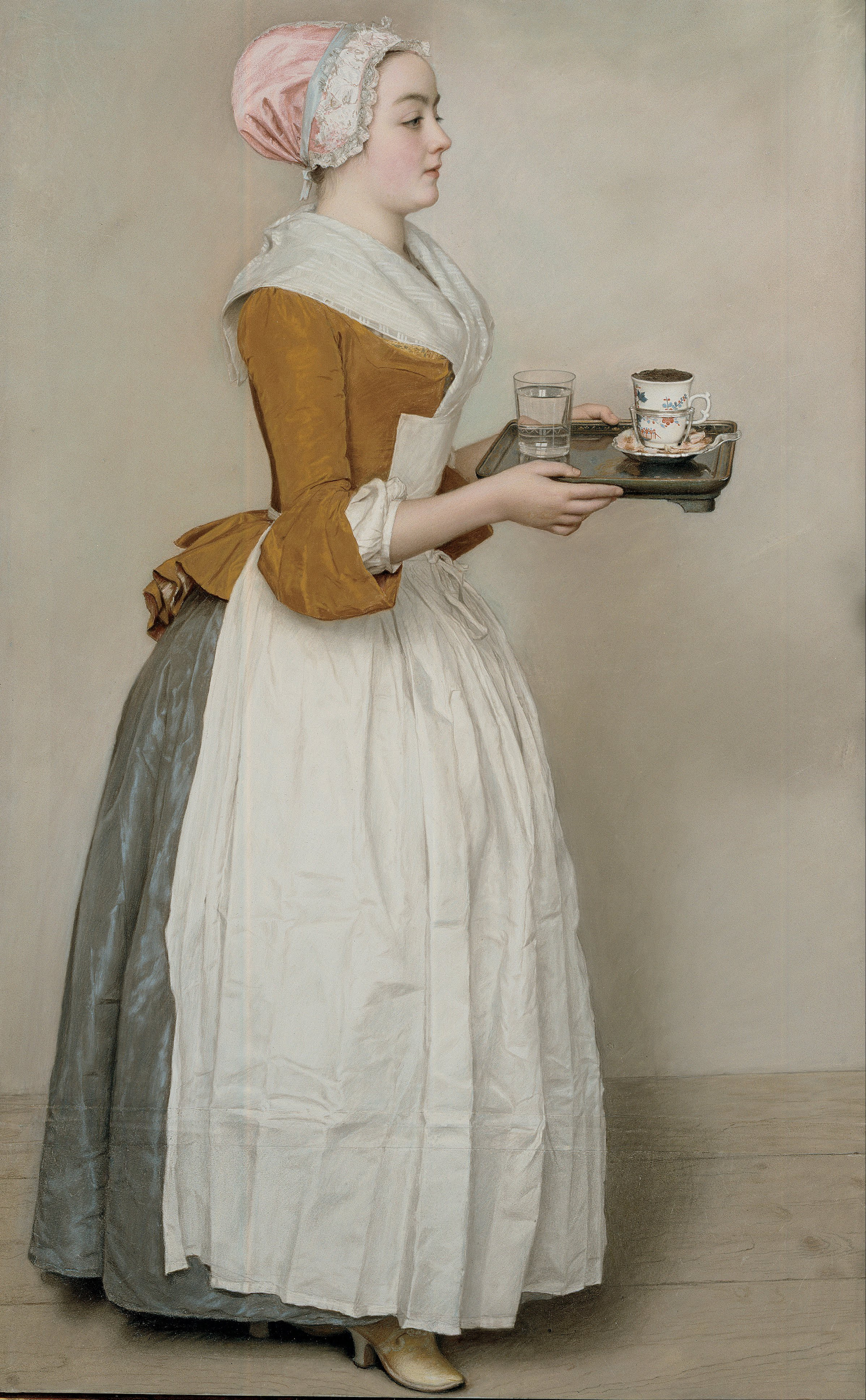
[Image: DcoetzeeBot/Wikimedia Commons]
Skipping ahead to the 1900s, the artistic rendering of sustenance begins to centre on the role of food in social occasions. Paintings like Manet’s The Luncheon on the Grass (1862) or Renoir’s Luncheon of the Boating Party (1881) seem to value food as an integral part of the painting no less than the characters around it.
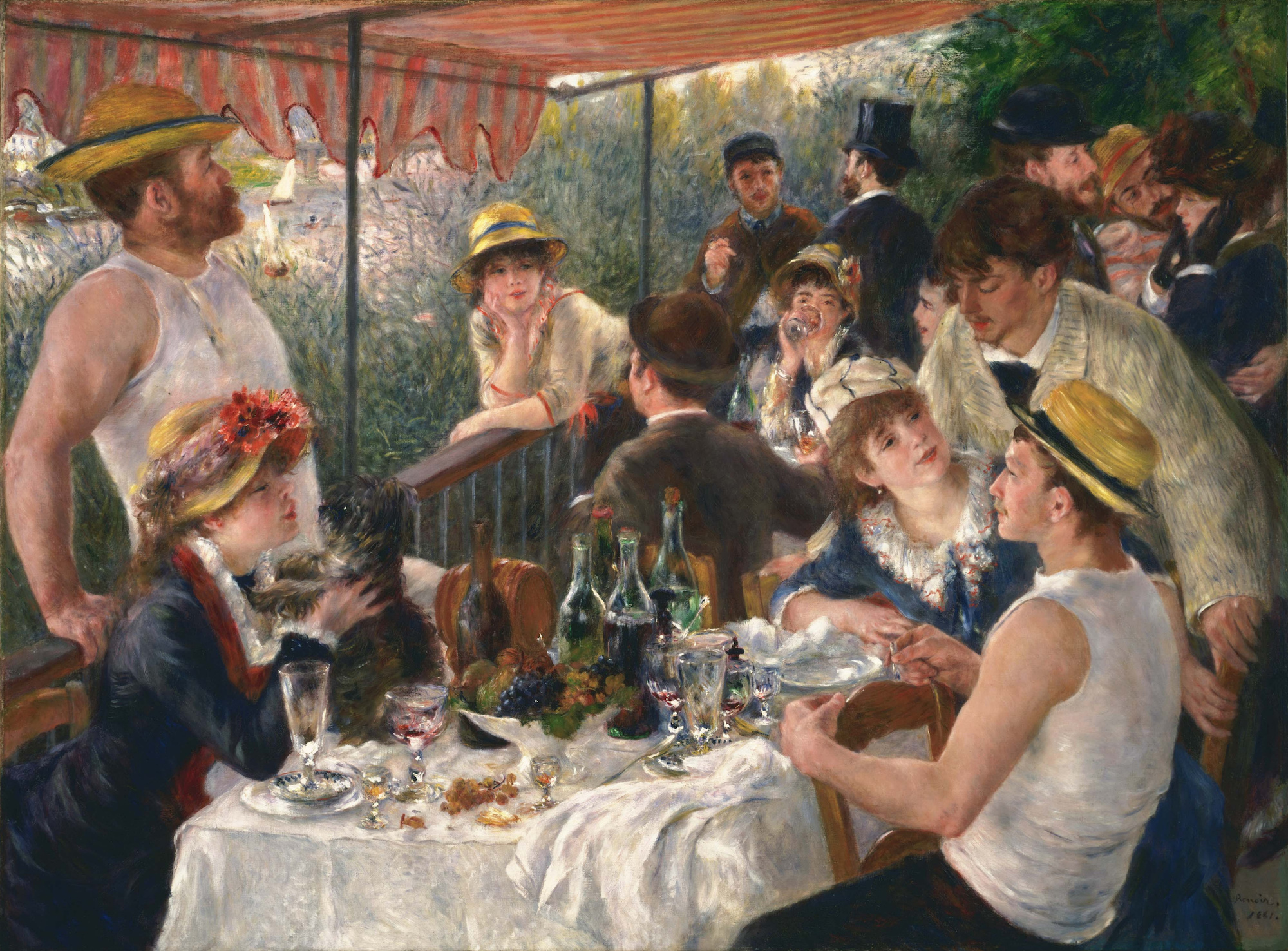
[Image: DcoetzeeBot/Wikimedia Commons]
In the 21st century, the pop art movement also finds food and society to be inextricably intertwined – and sees the former as a means of making commentary on the latter.
Andy Warhol’s instantly recognisable Campbell’s Soup Cans (1962), for instance, speak to his interest in consumerist culture as well as in depicting ordinary experiences on gallery walls. Through his canned soup series, Warhol advocates for the right of the public to be exposed to art the same way they are constantly exposed to advertising messages, while at the same time reflecting on the value of the handmade in his work as an artist.
View this post on Instagram
View this post on Instagram
Slightly more critical towards the rapid economic changes and social transformations in the wake of WWII and during the Cold-War era, Roy Lichtenstein depicts hotdogs and meat in his signature cartoonish style.
Tom Wesselmann – although refusing the label of pop artist himself – makes use of the same pop-art-esque visual language for his still lifes, featuring tables laden with all the foods that can be found in the pantry of an average 1960s American family, with no other intention than to depict everyday objects for their purely aesthetic qualities.
View this post on Instagram
View this post on Instagram
We also shouldn’t forget Claes Oldenburg, with his massive vinyl installations and hand-sewn sculptures depicting popular treats like French fries, hamburgers, ice cream cones and slices of cake, or Wayne Thiebaud and his tempting paintings of sweets and pastries, whose main purpose seemingly is simply to make viewers mouths’ water – and make them dream of running their fingers along the perfect cake tops and taste the frosting.
View this post on Instagram
View this post on Instagram
In the realm of conceptual art, artists play with the idea of the supposed permanence of art, for example through sculptures that integrate discarded objects, leftovers or other perishable materials – like Giovanni Anselmo’s Untitled (Sculpture That Eats) (1968), which integrates wilting lettuce in a granite block.
View this post on Instagram
Daniel Spoerri, founder of the Eat Art movement in the 1960s, initiated a critical reflection on mankind’s constant attraction to food with his vivid tableaux-pièges, or snare pictures, that he assembled by freezing a random composition of objects (or actual meals) on a horizontal surface and then hanging them like a 3D snapshot.
View this post on Instagram
View this post on Instagram
The ‘60s also saw the emergence of hyperrealism, with artists creating paintings that look astonishingly like photographs. A number of works in the pop art movement combine this photorealism with the quiet dignity of 17th-century Dutch still lifes, for instance in pieces by Christopher Broadbent, Jason De Graaf and Tjalf Sparnaay.
View this post on Instagram
View this post on Instagram
In the 1990s, Carl Warner drew attention with his unique foodscapes – landscapes in which food represents other objects. Leaves reveal themselves to be cornflakes. A path is constructed from lentils, and broccoli is masquerading as grass. Like Arcimboldo so many centuries before him, Warner cleverly drives pictorial convention to the edge until it is confused with reality itself, making the viewer ponder the difference between what is real and what is perceived.
View this post on Instagram
View this post on Instagram
If you’d like to further explore the many fascinating ways in which our human obsession with food is reflected in our equally human obsession with creating art, mark your calendar for The Art of Food, an exhibition to be held at the Baker Museum in Naples, Florida from 18 November 2023 until 10 March 2024, examining the subject through the works of artists such as Damien Hirst, Enrique Chagoya and Hung Liu.

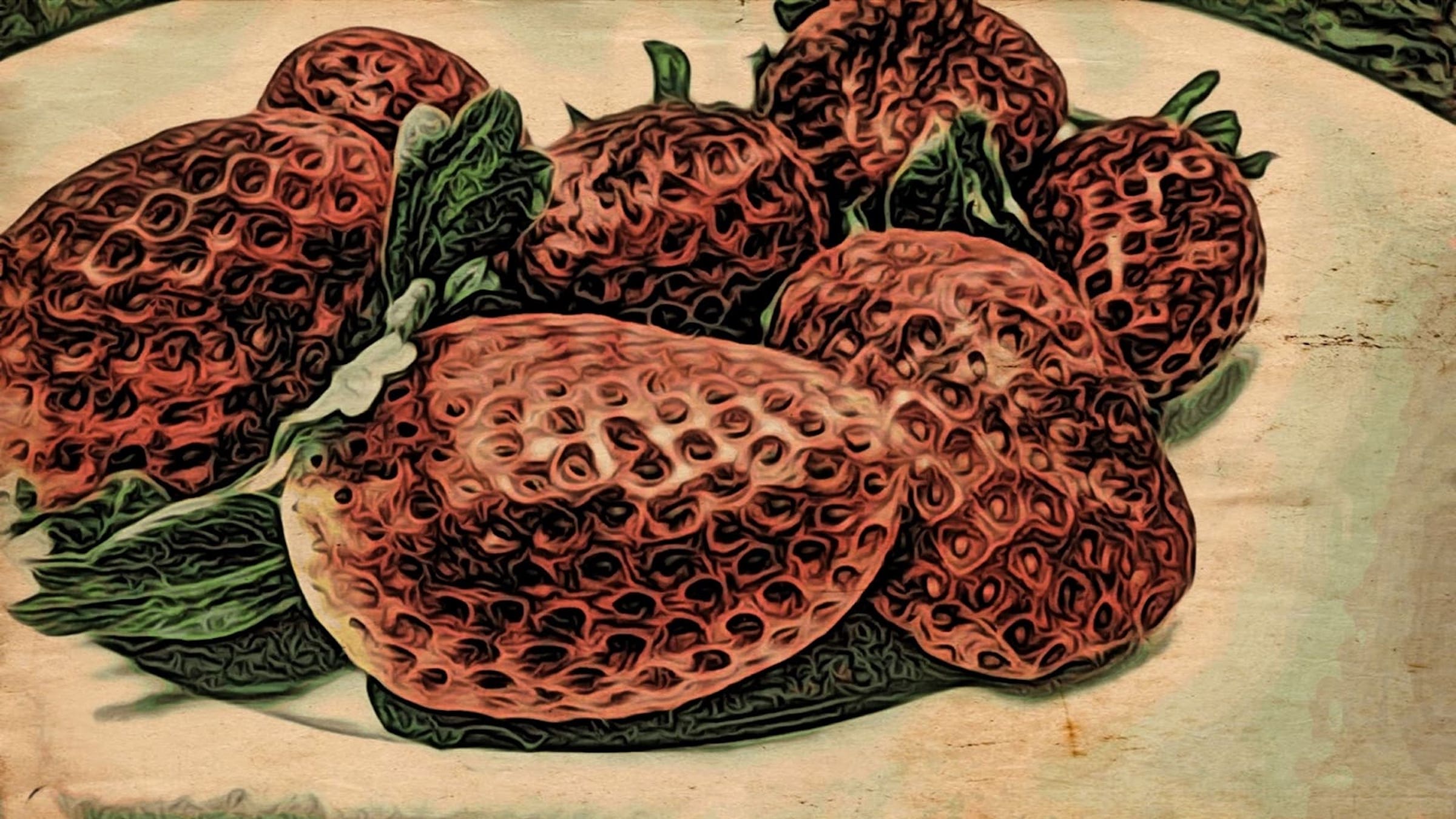












Sorry, the comment form is closed at this time.